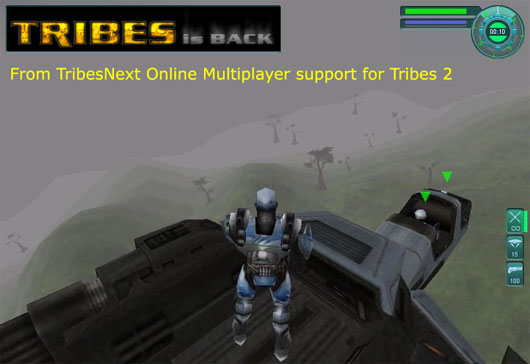
- Tribes 2 classic vs base software#
- Tribes 2 classic vs base Pc#
- Tribes 2 classic vs base series#
- Tribes 2 classic vs base free#
“Now it would be totally normal,” Frohnmayer says. In the era of Destiny, Battlefield, Far Cry, and Fortnite, it’s difficult to grasp how limitless Starsiege: Tribes would have looked to the E3 audience only a year after Quake - Id Software’s gloomy, Gothic, muddy-looking successor to Doom - became widely available on Windows. “He was running around like, ‘Oh, yeah, first-person shooter,’ and then all of a sudden rounds the corner and there is this huge terrain in the distance and he runs out there with a jet pack on.
Tribes 2 classic vs base software#
“It blew people’s minds,” remembers lead software engineer Mark Frohnmayer. Like, ‘Holy crap.’ They’ve never seen anything like that.”

“And then go out to the exterior and they see this huge terrain, and then just jump off and then jet-pack to the ground. “It started off running around an interior that looked just as good as Quake,” he recalls.
Tribes 2 classic vs base Pc#
In front of a large convention crowd, lead designer Scott Youngblood led a live demo that introduced the PC title to the public.

Tribes 2 classic vs base series#
Our series soars on with the Dynamix-developed Starsiege: Tribes, a jet-packing, pioneering first-person shooter that provided a template for today’s online play.Īt E3 in Atlanta in the spring of 1998, a newly announced game named Starsiege: Tribes took aim at the whole history of first-person shooters, a burgeoning genre whose hallmarks had crystallized quickly. Throughout the year, The Ringer ’s gaming enthusiasts will be paying tribute to the legendary titles turning 20 in 2018 by replaying them for the umpteenth time or playing them for the first time, talking to the people who made them, and analyzing both what made them great and how they made later games greater. Katabatic, which originally appeared in Tribes 2, has been remade in Tribes: Ascend, along with a revamped version of Broadside called Crossfire.Art may largely be a matter of taste, but one conclusion is close to inarguable: 1998 was the best year ever for video games, producing an unparalleled lineup of revolutionary releases that left indelible legacies and spawned series and subcultures that persist today. While some maps have retained the classic nature of the Tribes franchise with large open areas and base structures, others have a more urban feel to them, featuring buildings and streets. Hi-Rez Studios has thus far released Capture the Flag, Team Deathmatch, Rabbit (now only available in private servers), Arena, and Capture & Hold game modes. Credits are then used to buy vehicles, supply drops, Tactical and Orbital strikes and base upgrades. Players earn in-match credits during matches for killing enemies, repairing structures or capturing objectives. Hi-Rez will also sell cosmetic items such as player skins, along with boosters that allow players to gain experience points at a faster rate.
Tribes 2 classic vs base free#
Players will be given 3 free loadouts: the Pathfinder, Soldier, and Juggernaut, when they first start playing the game, each wearing light, medium and heavy armor respectively. Upgrades to armor, weapons and perks can only be purchased by experience points.

Paid-for loadouts will be available to the user instantly, while those who choose to unlock them through playing will have a much longer wait. Loadouts may be acquired either through an upfront payment, or through playing the game and earning experience, which can be used to purchase classes, weapons, perks and upgrades. Players can select which loadout to use either when first joining a game, respawning or at an inventory station. There are three possible sizes of armor to choose: light, medium and heavy, with 3 loadouts in each weight group, for a total of 9. Each loadout supports two in-hand weapons, a set of belt items such as grenades or mines and a pack. Each loadout specifies what type of armor the player has, along with what weapons and items they carry. Tribes: Ascend features a class-based loadout system.


 0 kommentar(er)
0 kommentar(er)
